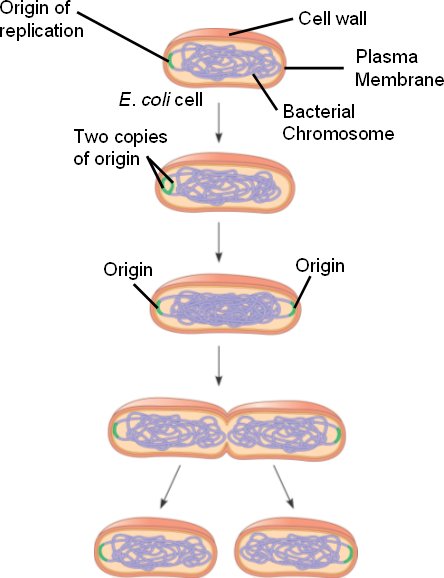 Binary fission.
Binary fission.
Prokaryotes such as Escherichia coli reproduce by a process called binary fission.
DNA replication begins at the origin of replication.
One copy of the origin
moves toward the other end of the cell.
Replication is complete, yielding two chromosomes.
The plasma membrane grows inward, forming a fission furrow.
The furrow deepens to produce two genetically identical "daughter cells".